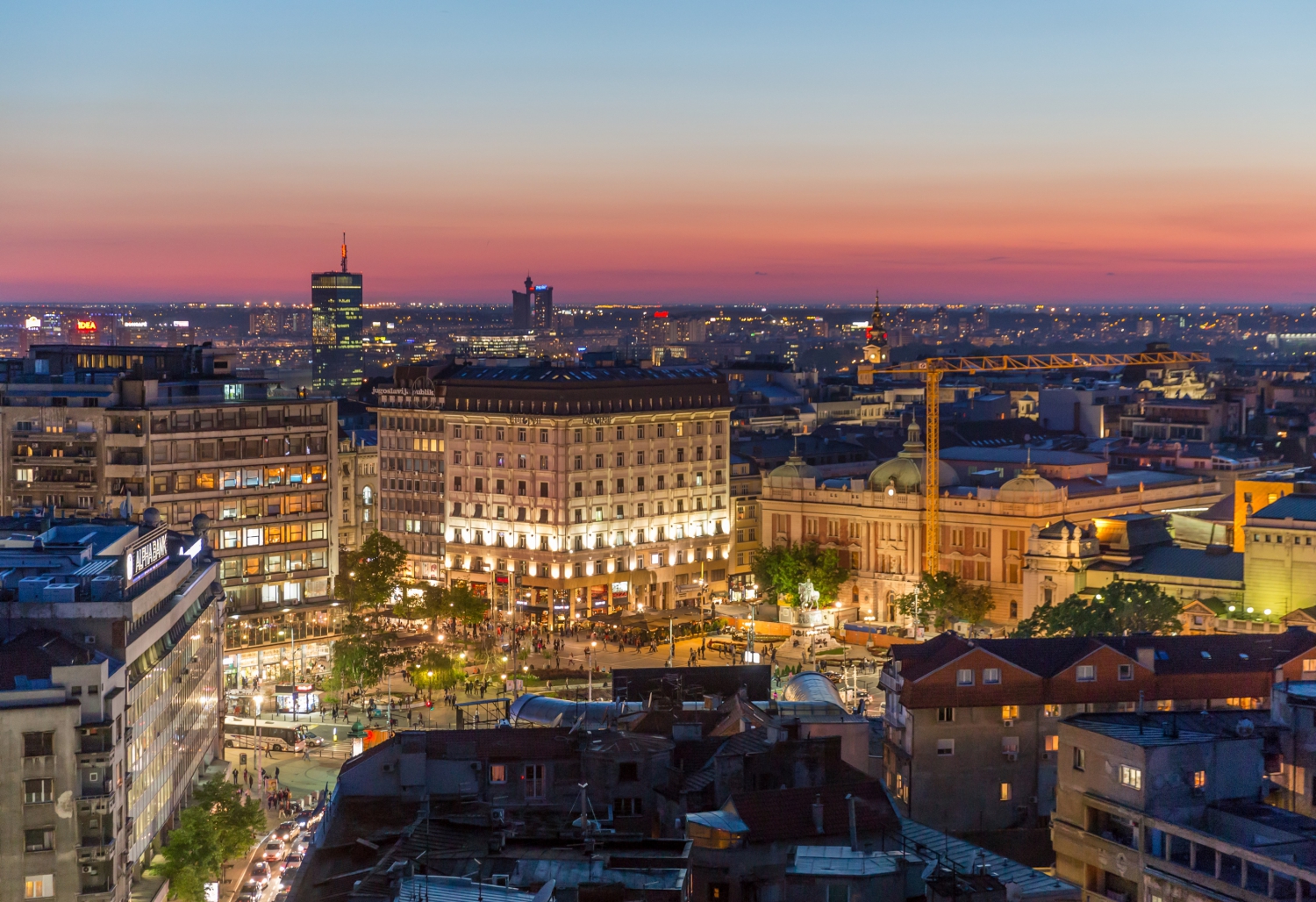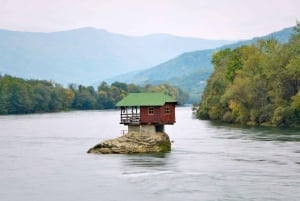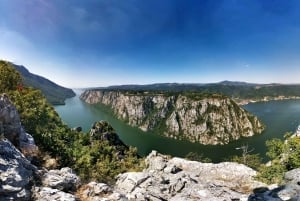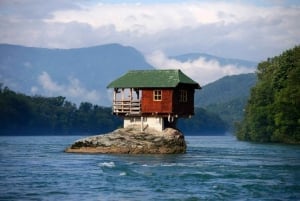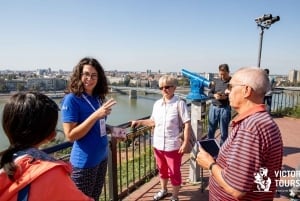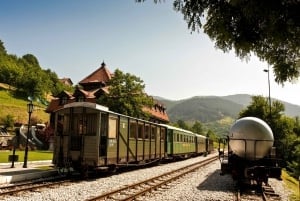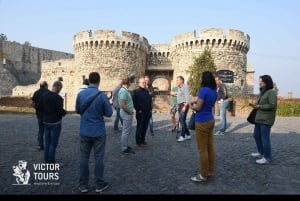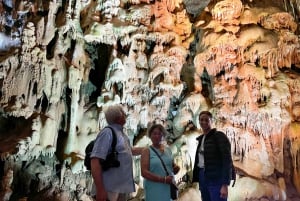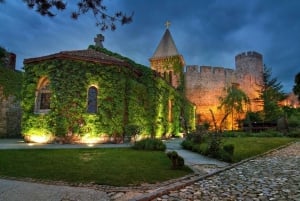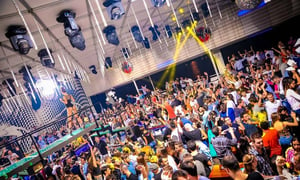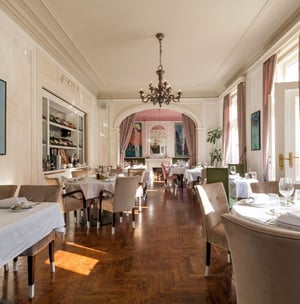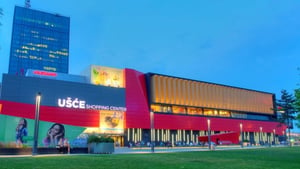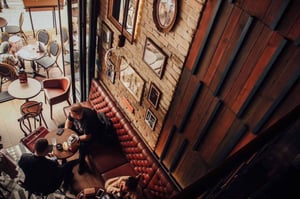Places you should visit
Book Top Experiences and Tours in Belgrade:
If youʻre booking your trip to Belgrade last minute, we have you covered. Below are some of the top tours and experiences!- Belgrade: Best of West (Drina House, Drvengrad and Sargan 8)
- From Belgrade: Golubac Fortress and Iron Gate Gorge Tour
- Belgrade: Sunset Sightseeing Cruise with Drinks
- Western Serbia 1-Day Tour of the Key Sites from Belgrade
- From Belgrade: Novi Sad & Sremski Karlovci Full-Day Tour
Avala Tower is one of the trademarks of Belgrade, at 16 km south of the city. The first Avala Tower was built for almost 4 years - since 1961 and put into operation in 1965. The Tower of Avala was demolished in the 1999 bombing, and the new Avala Tower was rebuilt and ceremonially opened in April 2010.
It is a replica of an old tower, and it is 204.68 feet high. There is a summer terrace for visitors - a viewpoint at 122 meters and a coffee bar just 3 meters lower.
There is a monument to the Unknown Hero on Avala mountain.
Statistics shows an increasing number of visitors to the tower, which is one of the top 5 tourist destinations in Belgrade.
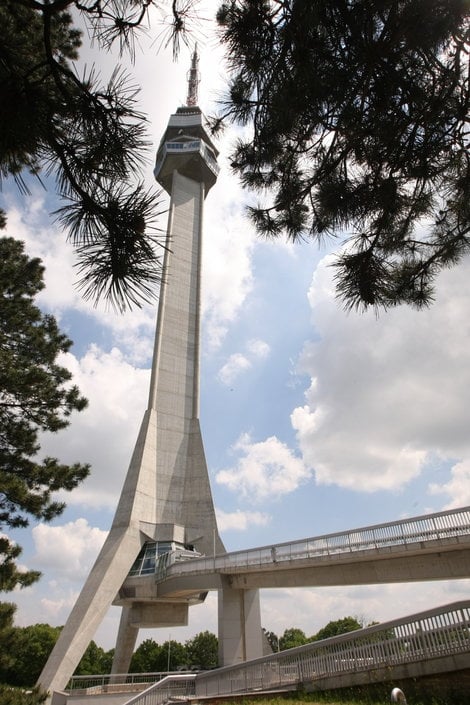
TEMPLE OF SAINT SAVA
The Temple of Saint Sava is the largest Serbian Orthodox temple, the largest Orthodox temple in the Balkans and one of the largest Orthodox churches in the world. It is located in the eastern part of Saint Sava Square, in the municipality of Vracar, in Belgrade. It has been built in a place where it is believed the relics of St. Sava, the founder of the Serbian Orthodox Church, were burnt by Sinan Pasha in 1595. The construction of the church is funded by voluntary contributions and by collecting money through additional stamps. Not far from the temple is the parish home, and there will also be a planned patriarchy building. This memorial temple represents the organic part of the contemporary vivid silhouette of Belgrade, making it one of its main features.
It was built in the Serbian-Byzantine style, with four bell towers 44 meters high. The height of the top of the dome is 70 m, while the main gold plated cross is another 12 m high, giving the top of the temple a total height of 82 m and an altitude of 134 m (64 m above the Sava River). Because of this, this church occupies a prominent place on the Belgrade horizon and is visible from all the city's roads.
The church can receive 10,000 believers, and it can cost 800 choral singers at the Western Horizon Gallery. Beneath the floor of the temple, the treasury and the crypt of St. Sava were built, as well as the tomb of the Holy Prince Lazar.
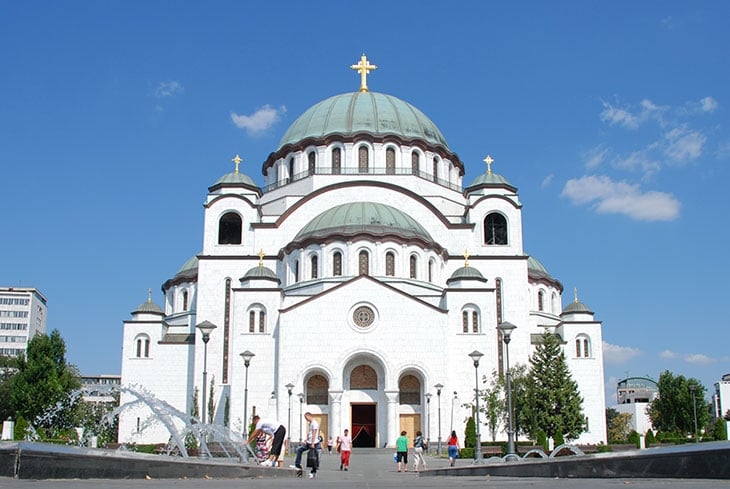
THE RESIDENCE OF PRINCESS LJUBICA
The Residence of Princess Ljubica is one of the few preserved buildings from the time of the first reign of Prince Milos Obrenovic. It was built in the period 1829-1831.
In the 1970s, The City of Belgrade decided that The Residence of Princess Ljubica’s building, in accordance with its historical, artistic and monumental heritage, gets a new purpose and becomes a museum. After the works, renovation and reconstruction of the buildings in 1980, they joined the Belgrade City Museum.
In September of the same year, a permanent museum setting "Enterprises of the Belgrade Houses of the 19th Century" was opened in The Residence of Princess Ljubica. The item represents a representative selection of art objects and applied arts that are stored in the collections of the Belgrade City Museum.
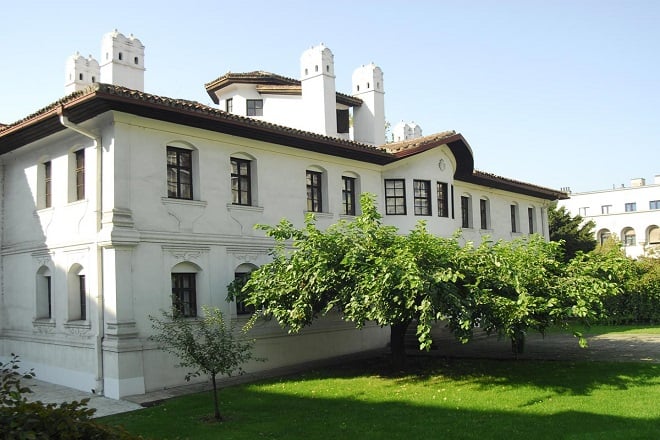
NEBOJSA TOWER
Nebojša Tower is located on the lower town of the Belgrade fortress, at the entrance of the former Danube port, and is one of the most famous towers. During the Turkish rule in the tower from the list of Belgrade Sights, the Greek revolutionary of Riga from Fera was executed. It got the name from the negation of the verb to be afraid.
Thus, it became a tower that is not afraid of any opponent or attack, has become unbreakable. Octagonal is a thick wall shape, spreads on four floors and a ground floor with a total height of 22m.
Today, the tower has five exhibition areas, the Annex dealing with the history of the tower as a military facility, the Tower of Nebojša as a dungeon, Riga from Fere's Life and Work, the First Serbian Uprising and Belgrade in the first half of the 19th century.
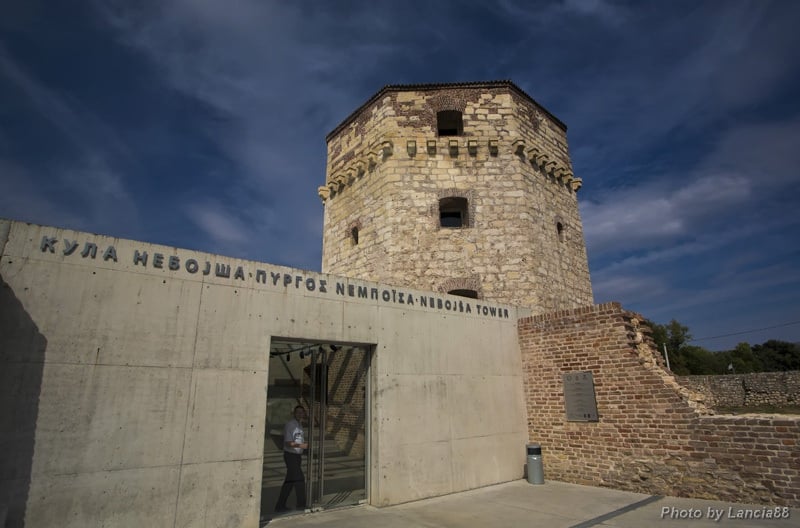
NIKOLA TESLA MUSEUM
It was founded in 1952 and opened to the public in 1955. The museum holds the entire legacy of Nikola Tesla. The museum has got a rich collection.
Over 160000 original documents, 2,000 books and magazines, about 1200 historical and technical items, over 1500 photographs and other items, devices and instruments, more than 1000 plans and drawings.
Nikola Tesla Museum is a unique institution in our country and in the world. He owns the largest collection of documents about the life and work of the world scientist Nikola Tesla. It has a great significance for scientists, and will also research a wide audience. As such, it contributes to a wider and clearer insight into the great contribution to science and society, which Nikola Tesla, through his fruitful work, gave to all mankind.
Opening hours: Tuesday-Friday 10.00-18.00, Sat-Sun 10.00-13.00, Mondays closed

MUSEUM OF CONTEMPORARY ART
The Museum of Contemporary Art in Belgrade was opened on October 20, 1965. The activity of the Museum begins in 1958 when the decision of the founding of the Modern Gallery, an institution whose task was to follow the development of Yugoslav and Serbian contemporary art, was made by the act of the Council for Culture of the National Committee of the City of Belgrade.
The building of the Museum of Contemporary Art is the work of the architects Ivana Antić and Ivanka Raspopović, was built between 1960 and 1965. It was opened for visitors on October 20, 1965, and closed in 2007 when the first phase of reconstruction and adaptation began.
The final phase of the works was completed after ten years in September 2017, and the ceremonial opening of the Museum of Contemporary Art took place on the 20th of October, marking the 73rd anniversary of the liberation of Belgrade in World War II.
The collection of the Museum of Contemporary Art has been established since 1958, and now it has more than 8,000 works and represents the development of artistic creation of the 20th and 21st centuries in the space of not only Serbia and the Balkans.
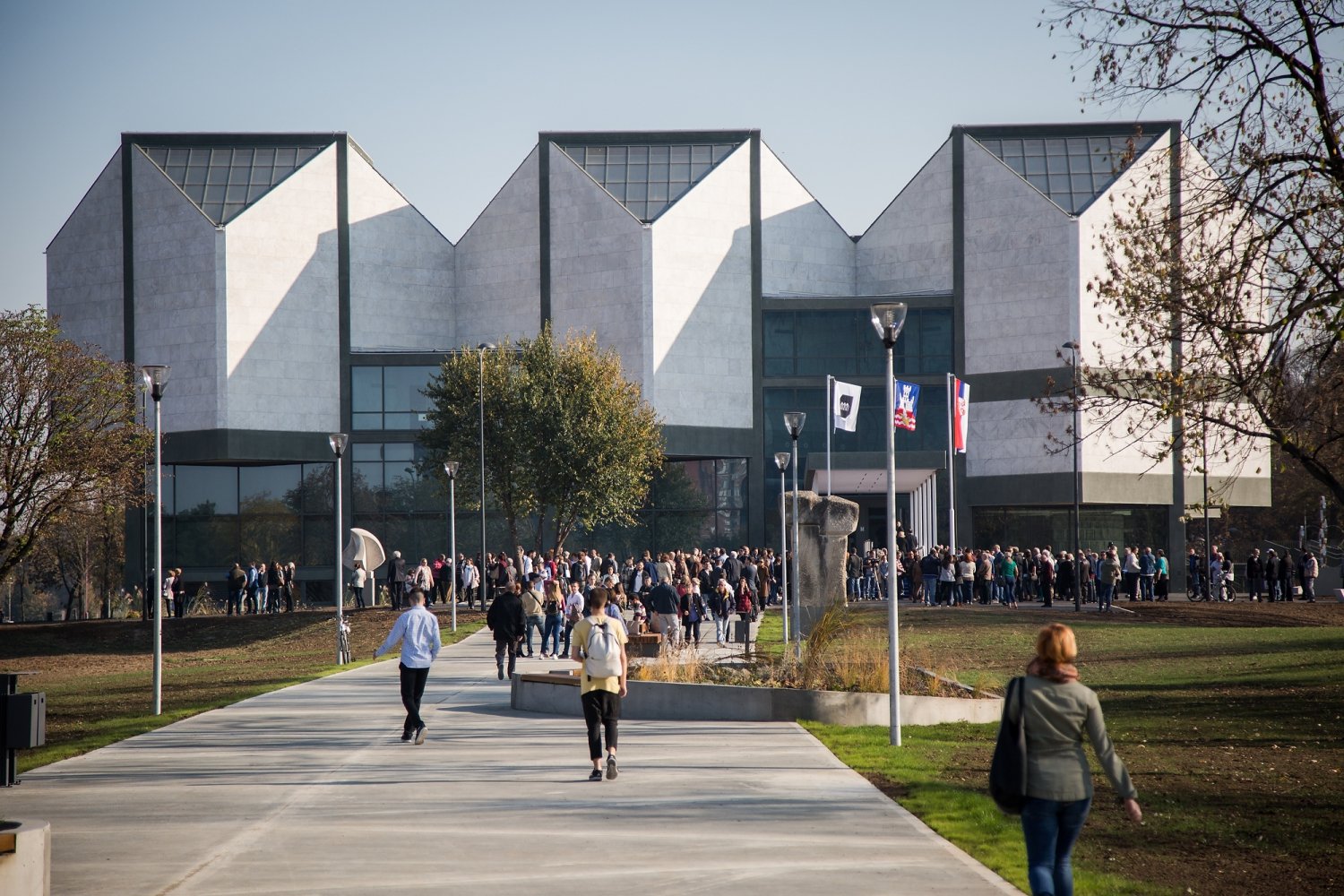
WAR ISLAND
In the magnificent landscape of the confluence of the Sava in the Danube, in the triangle that limits the cities of Belgrade and Zemun, but also the remains of formerly unpaved wetlands on the left bank of the Danube, there are two Danubian river islands - the Big and Small War Island.
These are the two last oases of pristine nature, separated from the urban core of the capital city of Serbia, filling the space between two contrasting natural structures, the Pannonia Plains and the Balkans.
These two islands represent a representative morphological and geological formation derived from the underwater springs that "plunged" above the water mirror during the sixteenth century.
In the protected natural estate, three protection zones have been identified: the nature protection zone (which has the character of a special nature reserve and includes the coastal zone of the island), the recreation zone (which includes the interior parts of the island) and the tourism zone (which includes the beach "Lido" with the planned extension).
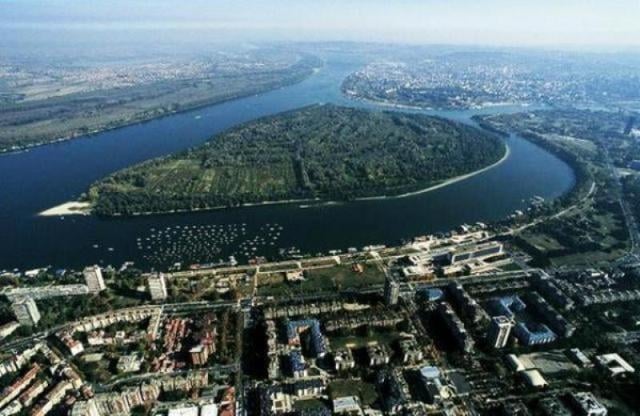
ZOO
The Belgrade Zoo was founded in 1936. It was founded by the then mayor, industrialist, Mr. Vlada Ilić. It was officially opened on Saint Peter Day - July 12th. Nowadays it covers an area of 7 hectares, it has over 270 species represented by about 2000 individual animals, wild and domestic. The interior of the garden itself is decorated with fountains and sculptures and it also has a small Baby Zoo for animals.
The Zoo is open every day of the year - depending on the season: in the winter it works from 08 to 16:30, and in the summer period from 08 to 19.30. Zoo Garden Belgrade works on Sundays - working hours are the same as every day.



